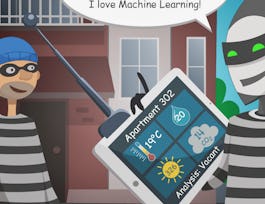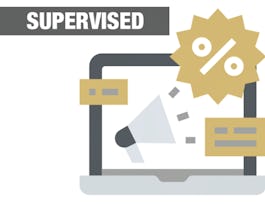Network analysis is a long-standing methodology used to understand the relationships between words and actors in the broader networks in which they exist. This course covers network analysis as it pertains to marketing data, specifically text datasets and social networks. Learners walk through a conceptual overview of network analysis and dive into real-world datasets through instructor-led tutorials in Python. The course concludes with a major project.


Network Analysis for Marketing Analytics
This course is part of Text Marketing Analytics Specialization
Taught in English


Instructors: Chris J. Vargo
Included with 
Course
Recommended experience
What you'll learn
Describe the concept of network analysis and related terminology
Apply network analysis to marketing data via a peer-graded project
Visualize a network based on centrality and other statistics via homework
Extract marketing insights from a network via a peer-graded project
Details to know

Add to your LinkedIn profile
3 quizzes
Course
Recommended experience
See how employees at top companies are mastering in-demand skills

Build your subject-matter expertise
- Learn new concepts from industry experts
- Gain a foundational understanding of a subject or tool
- Develop job-relevant skills with hands-on projects
- Earn a shareable career certificate


Earn a career certificate
Add this credential to your LinkedIn profile, resume, or CV
Share it on social media and in your performance review

There are 4 modules in this course
In this module, we will learn the key concepts in network analysis and the key terminology, including semantic and social networks. We will also survey common network analyses in marketing.
What's included
2 videos3 readings1 discussion prompt
In this module, we will learn how networks are prepared and the common data formats that represent networks. We will learn the differences between different network calculations and how networks are presented visually.
What's included
2 videos1 reading1 quiz
In this module, we will learn how to parse tweet JSON, extract mentions and text, load connections into edge lists, and visualize the network in Google Colab.
What's included
1 video2 readings1 quiz1 programming assignment
In this module, we will learn how to parse tweet JSON, process text into features, load connections into edge lists, and visualize the network in Google Colab.
What's included
1 video2 readings1 quiz1 programming assignment
Offered by
Recommended if you're interested in Data Analysis

Coursera Project Network

Arizona State University

University of Colorado Boulder

Coursera Project Network
Get a head start on your degree
This course is part of the following degree programs offered by University of Colorado Boulder. If you are admitted and enroll, your coursework can count toward your degree learning and your progress can transfer with you.
Why people choose Coursera for their career




New to Data Analysis? Start here.

Open new doors with Coursera Plus
Unlimited access to 7,000+ world-class courses, hands-on projects, and job-ready certificate programs - all included in your subscription
Advance your career with an online degree
Earn a degree from world-class universities - 100% online
Join over 3,400 global companies that choose Coursera for Business
Upskill your employees to excel in the digital economy
Frequently asked questions
Access to lectures and assignments depends on your type of enrollment. If you take a course in audit mode, you will be able to see most course materials for free. To access graded assignments and to earn a Certificate, you will need to purchase the Certificate experience, during or after your audit. If you don't see the audit option:
The course may not offer an audit option. You can try a Free Trial instead, or apply for Financial Aid.
The course may offer 'Full Course, No Certificate' instead. This option lets you see all course materials, submit required assessments, and get a final grade. This also means that you will not be able to purchase a Certificate experience.
When you enroll in the course, you get access to all of the courses in the Specialization, and you earn a certificate when you complete the work. Your electronic Certificate will be added to your Accomplishments page - from there, you can print your Certificate or add it to your LinkedIn profile. If you only want to read and view the course content, you can audit the course for free.
If you subscribed, you get a 7-day free trial during which you can cancel at no penalty. After that, we don’t give refunds, but you can cancel your subscription at any time. See our full refund policy.

